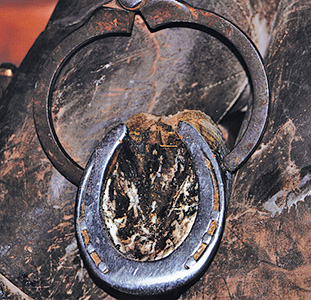American Farriers Journal
American Farriers Journal is the “hands-on” magazine for professional farriers, equine veterinarians and horse care product and service buyers.
Like most tools at our disposal, there is a correct and safe way to use them, as well as an incorrect and dangerous way.
There are some basic parts to the hoof testers. The reins are what you hold in your hands; the jaws are the area that goes against the foot; and the stops, located at the base of the jaws, prevent the tips of the jaws from hitting each other.

Testing around the inside of the hoof wall, moving ahead 1 inch at a time from heel to heel.
Hoof testers come in varieties as well. Some are adjustable like a pair of channel-lock pliers. Some have an adjustable slide and some have pressure-sensitive releases that can be programmed to place a certain amount of pressure on a foot. There is even a hydraulic type out there.
Regardless of the design, they all have one thing in common: They put direct pressure on an area of the foot with the intent of finding the point of pain in that foot. I like the larger, old-fashioned type.

Using hoof testers to test across the heels of the hoof.
To use a pair of hoof testers, I first watch the horse go, so I…